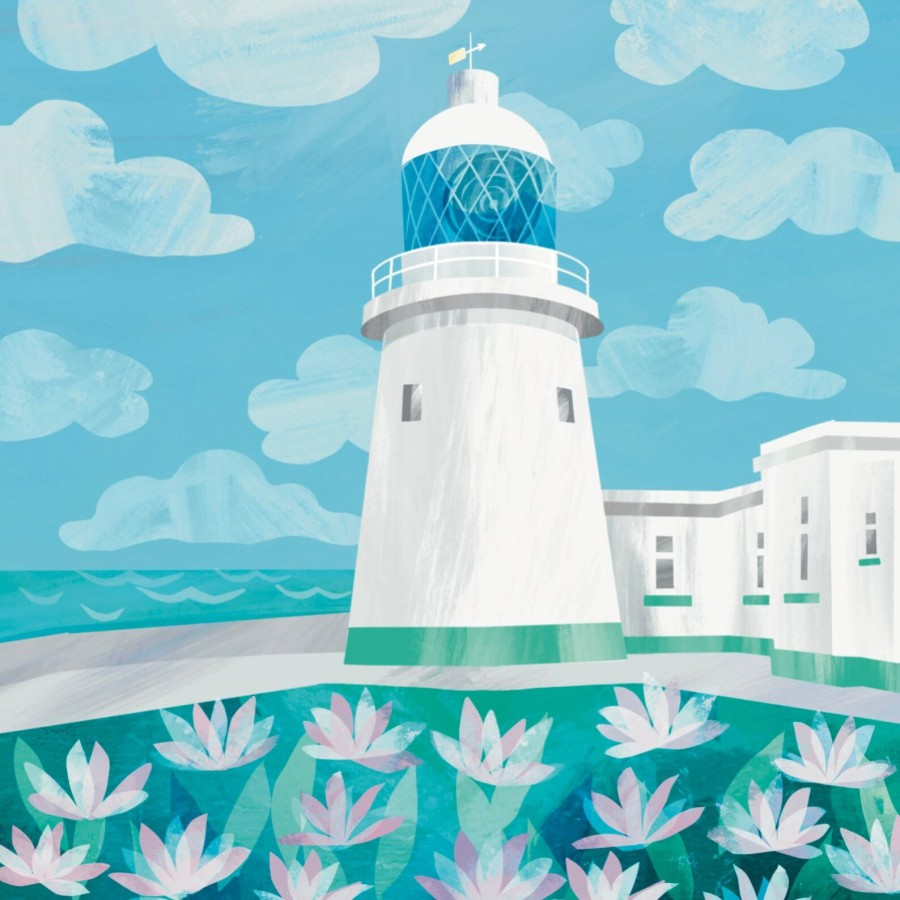
Due to being a coastal nation (with lots of changeable weather and hazards like rocks and cliffs), England has many lighthouses. Some are no longer in use (used for tourist information or even holiday homes).
But many are still working lighthouses, although most now operate automatically from Trinity House, rather than by a lighthouse keeper.
Not all lighthouses have red and white stripes (this is done to make them stand out against white cliffs, which is why say Beachy Head lighthouse is this blend of colours). Other lighthouses are white, and some are tall and others short and fat!
A Brief History of English Lighthouses

Lighthouses in England date back to Roman times, when fire (before lamps) was used to guide seafarers. Later came lighthouse keepers whose job would be to keep the lamps burning, though of course it was a solitary job.
The ‘Scottish lighthouse mystery’ that has puzzled people for years, was recently probably solved. Three men working in the Highlands mysteriously disappeared, while keeping watch in a lighthouse.
It’s now believed that one was swept to sea, and the other drowned, trying to save him.
In 1514, Henry VIII (not a very nice man who kept beheading wives and did awful things to the Catholic Church) did do one good thing, and that was to create Trinity House, which today is still in charge of maintaining and protecting England’s lighthouses.
Noteworthy Lighthouses and Their Stories
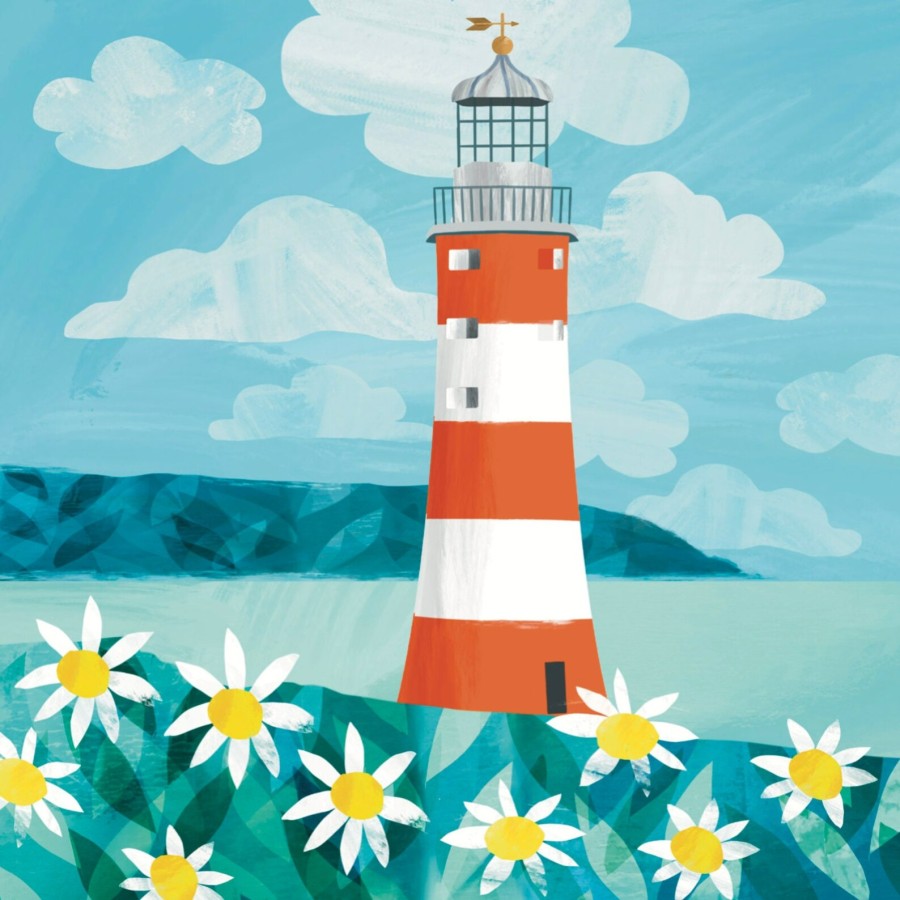
Smeaton’s Tower, Plymouth
This is one of England’s best-known and best-loved lighthouses, named after John Smeaton, who used interlocking stones to build it, to withstand strong waves.
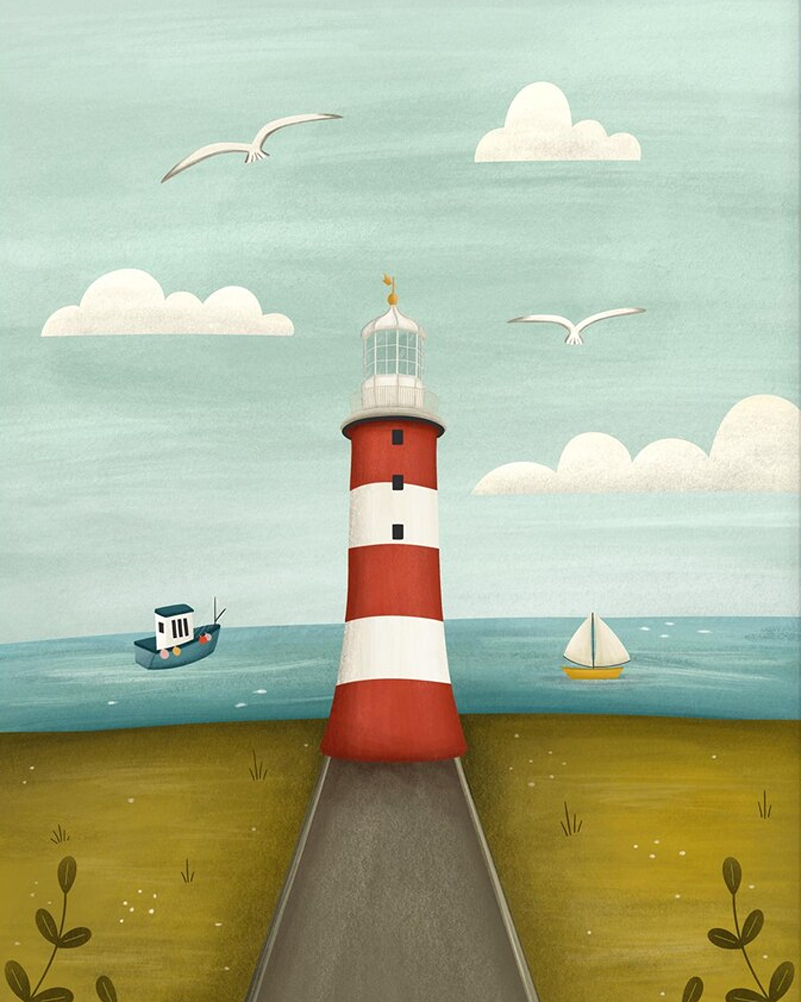
This museum is no longer in use, so it’s used as a museum, and many people visit to admire the sweeping harbour views from the top.
Beachy Head Lighthouse, Sussex
This is another iconic English lighthouse, built in the 1900s by workers who lived in huts on the chalk, while it was being built. Before that, a beacon sat on top of the cliffs, but when it was foggy, sailors could not see it.
Burnham-on-Sea, Somerset
This is a curious ‘lighthouse on legs’ that is raised on nine wooden stilts. It was built to warn ships to keep away from dangerous sands (you may know that Weston-super-Mare and other areas are home to dangerous sinking mud).
Southwold Lighthouse, Suffolk
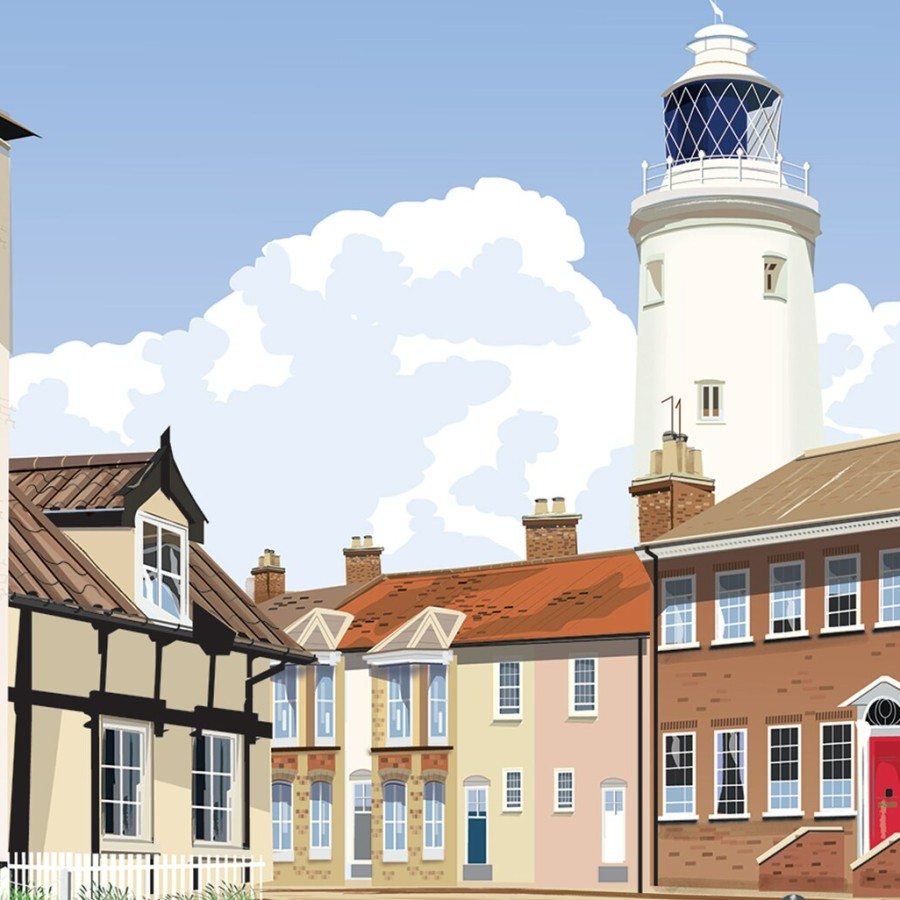
This pretty lighthouse is unusual, in that it stands within the town, near high street homes and shops. However, despite fears of automation leading it to not be of use, it’s still a working lighthouse.
Start Point Lighthouse, Devon
This lighthouse sits on one of the most exposed areas of the English coast. Built in 1836, the fog signal building collapsed in 1989, due to coastal erosion. A free-standing alternative now stands in its place, protected by a retaining wall.
Greenwich Lightvessel
This is England’s moving lighthouse, a ship fitted with lamps and fog horns. This striking red ship once guarded the busy Thames approach. Now retired, it serves as a reminder of the genius of building lighthouses.
Preservation and Continuing Relevance
Lighthouses were built to withstand strong weather, but today the main issue is coastal erosion (and companies wishing to buy retired lighthouse, for commercial purposes).
Thankfully, Trinity Houses uses donations to maintain both working and retired lighthouses, and to help protect their legacy long into the future.
England’s lighthouses are far more than ‘towers with flashing lamps’. They are reminders of risk and rescue, and the power of the sea.
Recently, a rare job came up as a lighthouse keeper, asking for someone with a good head for heights, happy to work alone, able to change lightbulbs and must like seagulls!
England’s Version of Exxon Valdez
England had its own serious oil spill in 1967, when a tanker struck Pollard’s Rock in Cornwall, spilling millions of gallons of oil, which affected the coast in France, Guernsey and Spain.
Recently, 4500 containers of Vanish stain remover washed up on a Cornish beach, after 18,000 fell off a container ship (so the rest are still at sea somewhere).
The local sea turned pink, and thankfully many volunteers helped to clean up the sea, to help wildlife. However others faced fines, as they drove to the beach to pick up free bottles of Vanish, and drove them home. We have a long way to go.
An Illustrated Guide to Britain’s Lighthouses
The Legendary Lighthouses of Britain is a gift book focused on 100 lighthouses, each one illustrated by artist Roger O’Reilly.
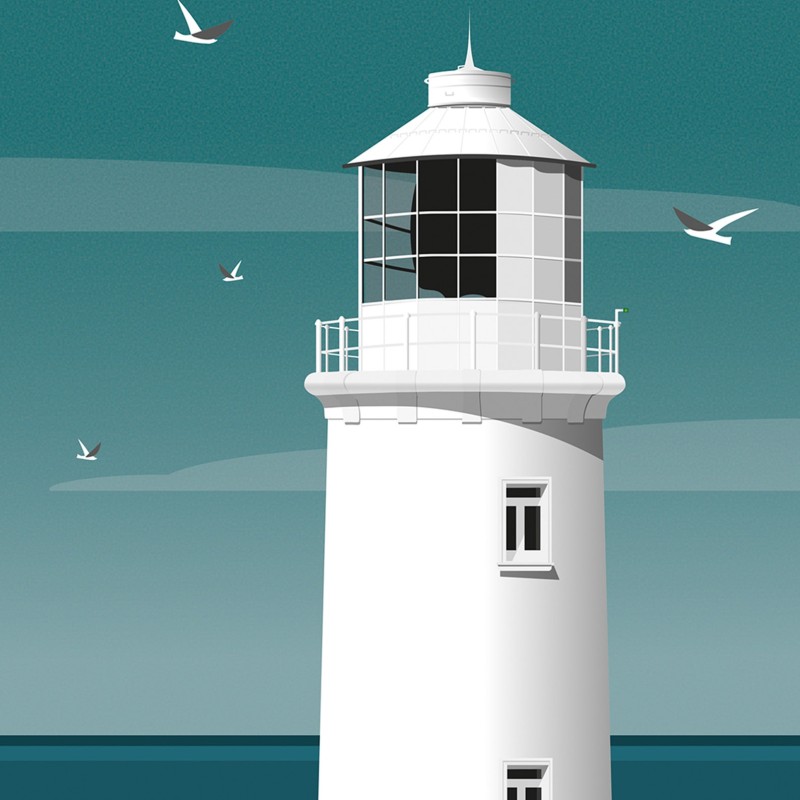
Trevose Head Lighthouse is a historic lighthouse on north Cornwall’s dramatic cliff coast, built in 1847. It is now automated, but before had a high and low light, to guide ships in the Bristol Channel.
This lighthouse was built after decades of petitions, due to the area being a known hazard for ships. A foghorn was also installed in 1882, and even upgraded with a 36-foot trumpet in 1963.
Today everything is run automatically, with the keeper cottages now rent out as holiday lets. Many people like to visit here, as the area is popular for coastal walks and watching seabirds and seals.
If renting coastal cottages, read our post on keeping dogs safe by the seaside.
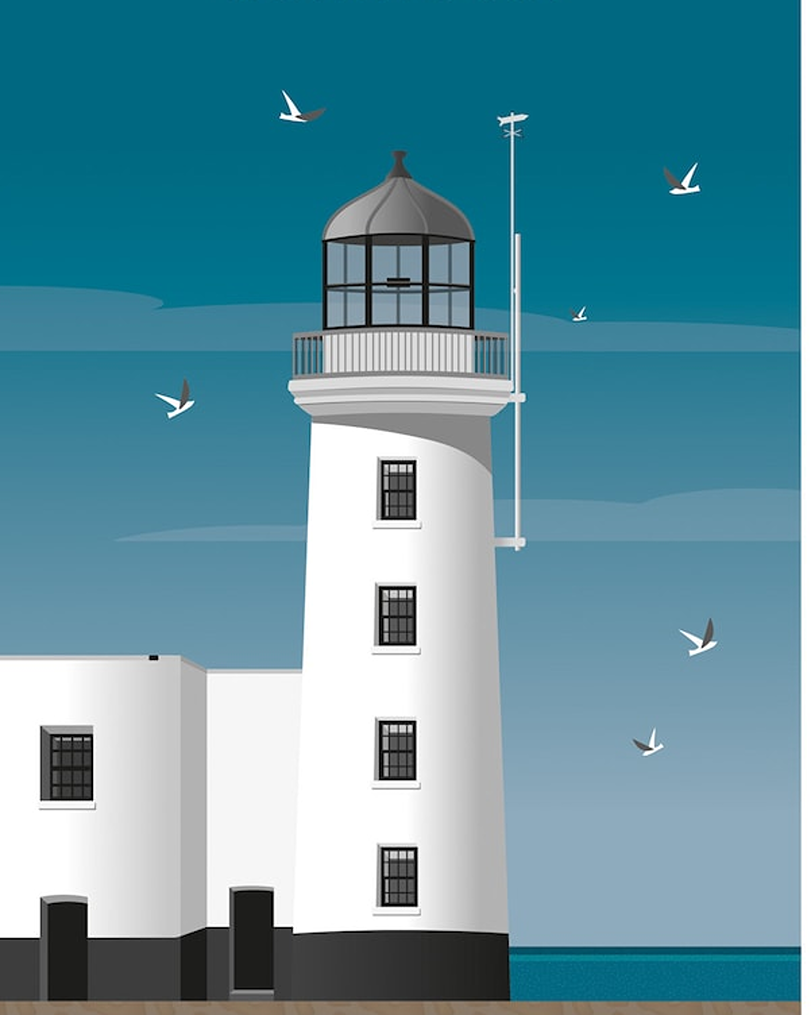
Scarborough lighthouse (situated at England’s first seaside resort on the East Yorkshire coast) is located on Vincent Pier (named after engineer William Vincent), with a rich history. It was damaged from bombs in World War I, and rebuilt in 1931.
Today the lighthouse is still used to navigate ships safely, with a fog signal system controlled by remote control. The walk to the lighthouse has views of the harbour, boats and the town itself. There is even a legend of a former harbour-master haunting this lighthouse!
This white-washed brick lighthouse is located in the second place in England to ever have a lifeboat. The first was at Formby Point, Lancashire.
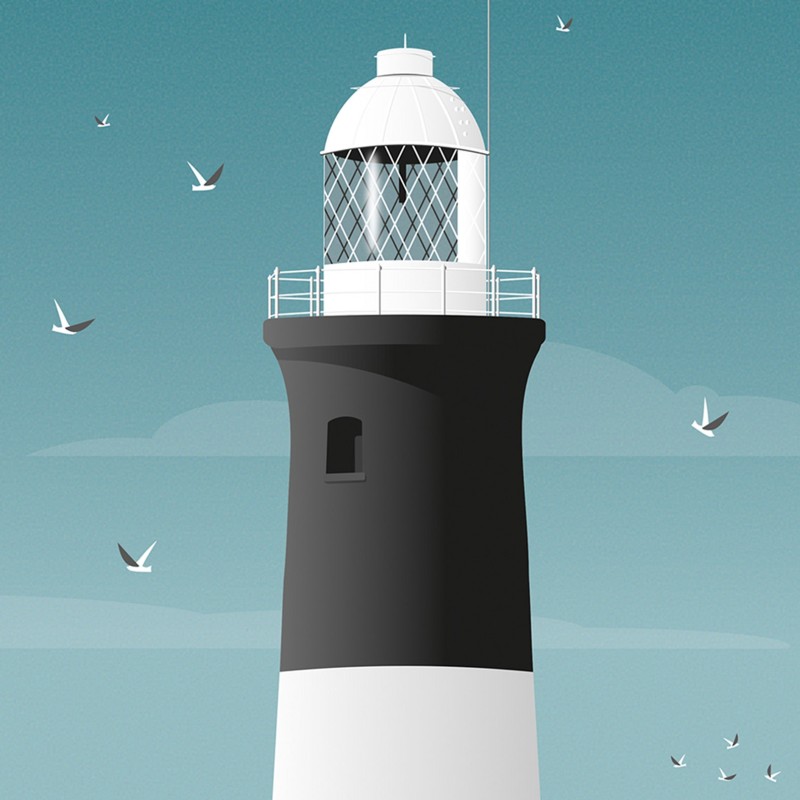
This Spurn lighthouse print is ideal for your home, office or independent shop wall. Sent in cardboard and wrapped in tissue paper for protection, just display in a favourite picture frame.
Spurn lighthouse is a unique and historic lighthouse that is no longer in working use, but instead managed by Yorkshire Wildlife Trust. Built in the 1890s, it features six stories and is now a key highlight of the Spurn National Nature Reserve.
Fully restored in 2016, volunteers have to be very fit, due to climbing six flights of stairs! A bit like tidal causeways, visitors must take care, as the ‘washover’ area can flood at certain tide times, isolating the lighthouse at the end of the peninsula.
This lighthouse sits on Spurn Point, a narrow spit of land extending into the Humber Estuary. The shape of this area is now constantly changing, due to deposition and coastal erosion. The lighthouse sits at the southern tip.
No vehicles are allowed on the final three-mile stretch to the point, and dogs are not permitted on the main part of the reserve, due to wildlife.
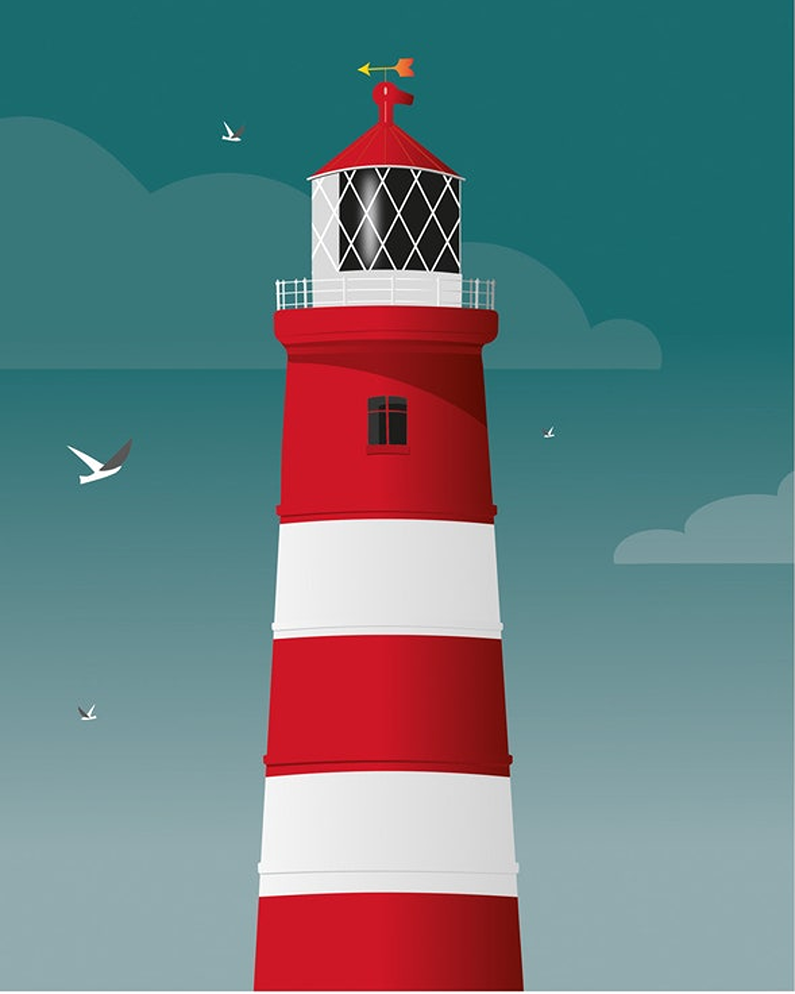
Happisburgh lighthouse is East Anglia’s oldest working lighthouse, located in an area that is very prone to coastal erosion (some local houses are falling into the sea). A distinctive red-and-white striped lighthouse to contrast against white cliffs, it was built in 1970, following a storm the previous year, when many ships were wrecked.
The lighthouse was nearly put out of service, until the local community banded together, and it’s now run by Happisburgh Lighthouse Trust. To save a lighthouse that has kept sailors safe, for over 200 years.
This is England’s only working lighthouse, that is not managed by Trinity House (instead it operates independently). It’s like the ‘community shop’ of England’s lighthouses! Visitors can climb the 112 steps, for stunning views of the Norfolk coast.
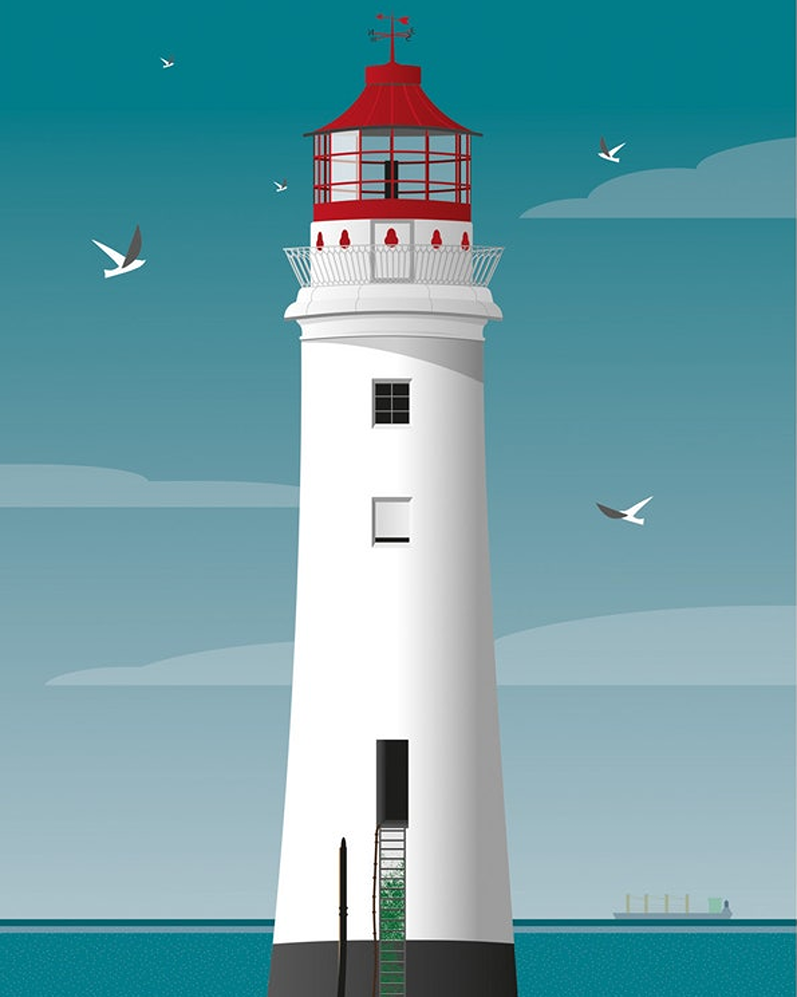
New Brighton lighthouse (also known as Perch Rock Lighthouse) is a historic landmark built on the site of a previous wooden perch, first built in 1683. This lighthouse was built from 1827 to 1830, to help protect ships navigating Liverpool Bay and Mersey River.
The lighthouse has a unique design with a spiral staircase, that leads up to the lighthouse keeper’s lamp room and living quarters. It’s based on the famed Eddystone Lighthouse, built with interlocking granite stones (the first 45 feet is made of solid rock). Then coated with a volcanic substance from Mount Etna (Sicily, Italy).
Like many of England’s lighthouses, this is no longer in operation. It remains a Grade II listed building, to preserve a beautiful relic of our past.
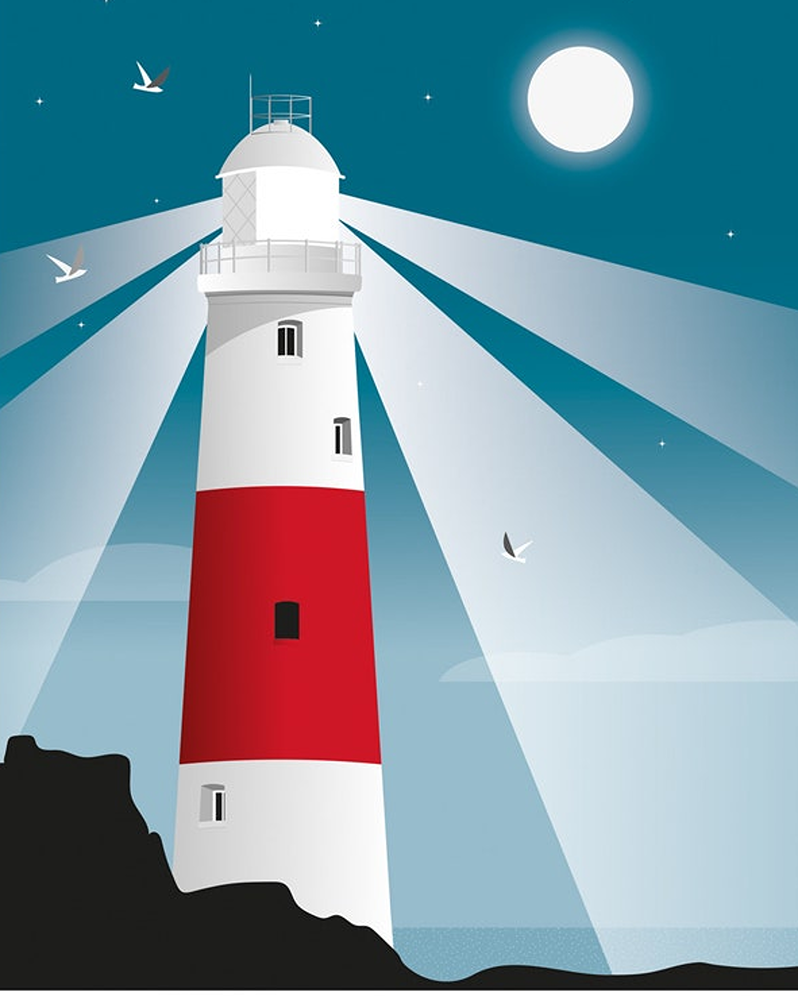
Portland lighthouse art print is one of England’s best known, with its tall red and white tower. Built in 1906, it has guided many ships through the dangerous waters of the English Channel – particularly near Portland Bill and the Shambles sandbank. The lighthouse was automated back in 1906, and now runs from Harwich (Essex).
Portland Bill is a particularly treacherous meeting of tides including Portland Race, a strong current. This lighthouse also guides ships towards Weymouth. From 1940 to 1966, the lighthouse would blast a diaphone fog signal every 30 seconds, to warn ships of bad weather.
Red-and-white striped lighthouses are usually designed to stand out near contrasting landscapes, like white cliffs.
Today visitors can take part in a simulation of stormy sea voyage, or climb the 153 steps to the top of the tower, for panoramic views of the English Channel and Dorset coast. The former lighthouse keeper’s cottage is now part of Portland Bird Observatory.
Beachy Head Chaplaincy Team
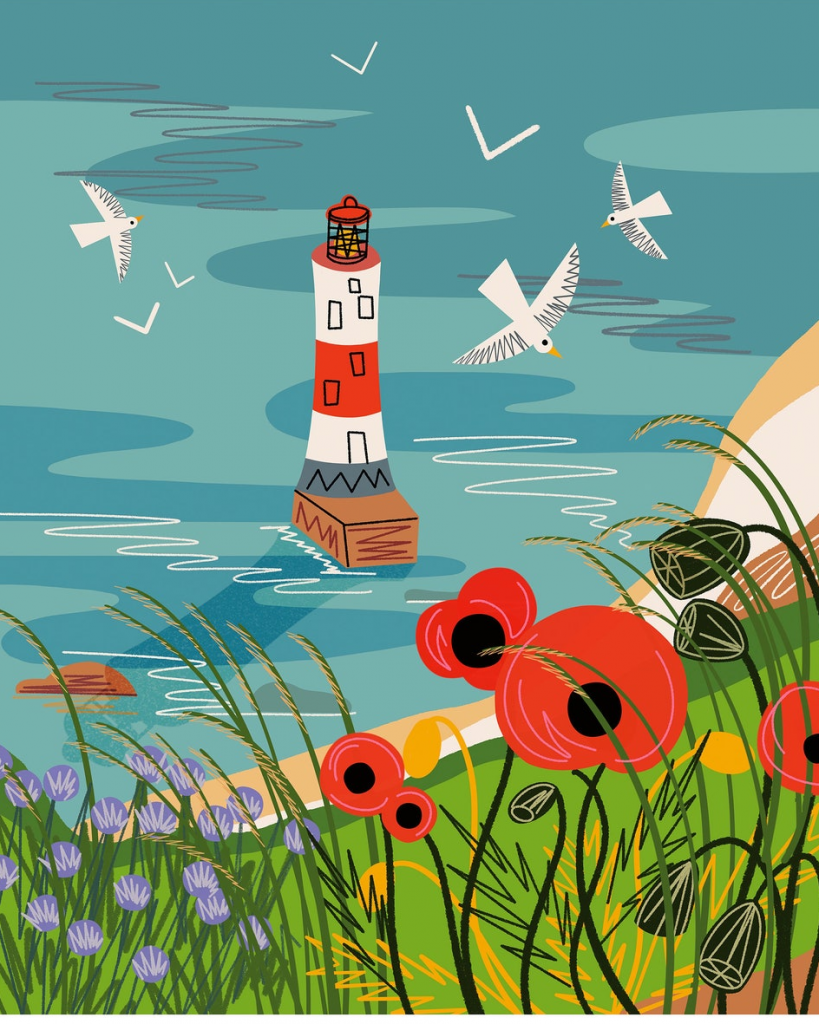
Beachy Head lighthouse is one of England’s most iconic, known for its red and white striped, against a dramatic backdrop of white cliffs. The lighthouse was built in 1902 in an area often shrouded in mist, in order to keep boats safe.
Keep away from cliffs (read our post on keeping dogs safe by the seaside – poppies are also unsafe near animal friends).
This was not the original lighthouse. Before being built, Belle Tout lighthouse was built in 1834, after petitions due to sailors often dying near the coast. The light could be seen by sailors from 20 miles away, but the lighthouse was later replaced, due to coastal erosion, meaning the lighthouse keepers who manned it, would not be safe.
Beachy Head lighthouse is still a working lighthouse, but has no keepers as it’s operated by Trinity House in Harwich (Essex). It’s built from Cornish granite.
Preventing Suicides at Beachy Head Cliffs
The amount of suicides from Beachy Head cliffs has decreased in recent years, thanks to Beachy Head Chaplaincy Team. Each day when someone visits here to end their life, their chaplains are nearby, ready to listen to someone in despair.
All the chaplains are volunteers from local churches, who never preach, they just reach out with skilled crisis intervention, to anyone who needs help.
If it weren’t for the chaplaincy team at Beachy Head, my wife would now be a widow. Thank you for being there are my lowest.






